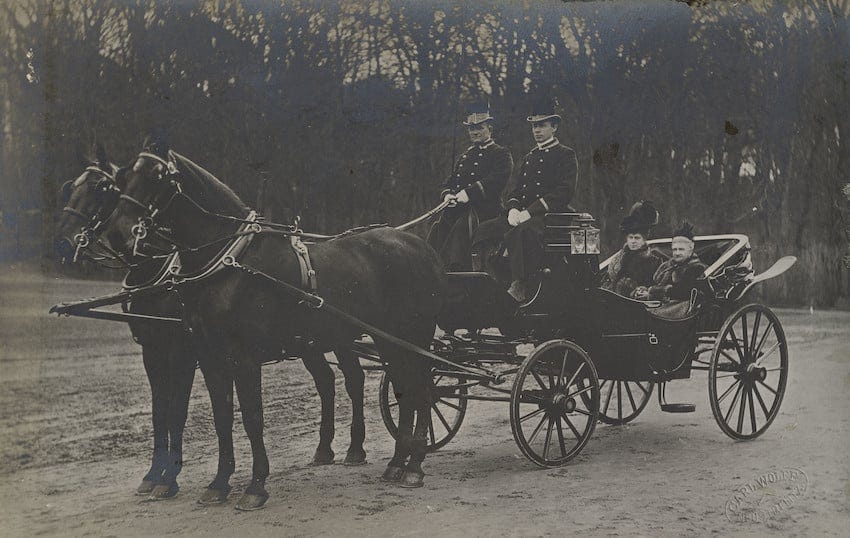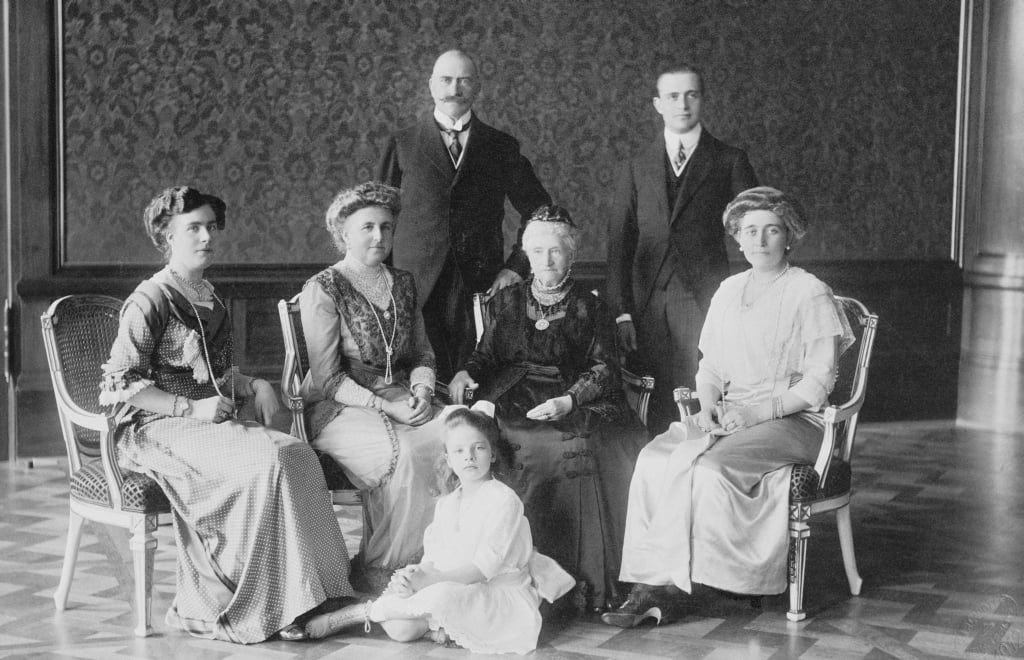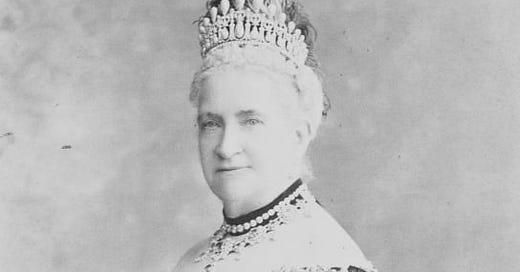A Queen, a Grand Duchess, and the Fate of Two Sparkling Royal Tiaras: The Will of Grand Duchess Augusta (Part 2)
Our two-part series on the jewels of Grand Duchess Augusta, Queen Mary's beloved aunt, concludes with today's article on the tiaras she left behind after her death.
I’ve been spending a fair bit of time recently digging in to the bejeweled details of several recently unsealed royal wills. Today, I’m bringing you the conclusion of our exploration of the will of Grand Duchess Augusta of Mecklenburg-Strelitz, who owned two of history’s most iconic British royal tiaras, both of which were coveted by her niece, Queen Mary. If you missed part one, you may want to read that first.
Grand Duchess Augusta was convinced that the Easter holiday celebrations of 1910 would be her last. With her 88th birthday fast approaching, the Dowager Grand Duchess of Mecklenburg-Strelitz’s health had taken a turn. In Britain, her niece, the Princess of Wales, received the news of her aunt’s decline at York Cottage on the Sandringham estate. May had been planning to travel to Germany to spend the upcoming Whitsuntide holiday with her aunt, but after hearing the concerning news, she moved up the timeline of her trip. On the morning of April 6, her husband, Prince George, saw May off at Victoria Station. Accompanied by Frank and Lady Eva Dugdale, May took the royal train to Dover, crossed the Channel, and boarded another train at Calais bound for Neustrelitz.

When she arrived in Strelitz, May discovered that Augusta was sufficiently weakened that, on March 31, she had made a will. The contents of that document were undoubtedly part of the discussion between the Grand Duchess and the Princess during the ten days that May spent by her aunt’s side in Germany. Even the British press began to speculate about the amount of Augusta’s fortune and the final wishes she had laid out in her will. After all, the Grand Duchess was a British princess–born Princess Augusta of Cambridge in 1822, she was a granddaughter of King George III and a first cousin of Queen Victoria–and she had received an annuity of £3,000 from parliament since her royal wedding way back in 1843.
The Birmingham Mail reported that May had made the journey to Germany because Augusta was “very feeble.” They added, “A weekly contemporary announces that it is generally supposed that the Princess of Wales will be her aunt's 'heiress.' Of course, this is rubbish. The Grand Duchess Dowager of Mecklenburg-Strelitz has a son–the reigning Grand Duke–and he has a son and two daughters, so her fortune will, of course, pass to her own family.”
This was mostly true. Augusta did plan to leave the majority–but not all–of her fortune to members of her own family. By the spring of 1910, Grand Duchess Augusta was a widow. Her husband, Grand Duke Friedrich Wilhelm, had passed away in 1904, and their only son, Adolf Friedrich, had succeeded him as Grand Duke of Mecklenburg-Strelitz. Adolf Friedrich was married to Princess Elisabeth of Anhalt, with whom he’d had four children: Duchess Marie, Duchess Jutta, Duke Adolf Friedrich, and Duke Karl Borwin. The years that had followed his accession, however, had not been kind to his daughters or his sons.

Duchess Marie had endured a particularly difficult decade. In 1897, she discovered that she was pregnant. The unmarried, nineteen-year-old princess had been taken advantage of by a footman who was responsible for maintaining the gas lamps in the bedrooms of the royal children. Adolf Friedrich and Elisabeth were horrified, but Augusta was sympathetic to her granddaughter. After the birth of Marie’s baby in 1898, the child was sent away to be raised quietly by another family. Marie fled to France, where she met a French count, George Jametel. They were married within a year, and had two more children. But the count was serially unfaithful and had primarily married Marie to access her substantial dowry.
Keep reading with a 7-day free trial
Subscribe to Hidden Gems to keep reading this post and get 7 days of free access to the full post archives.




